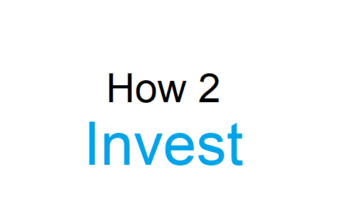The S&P 500 Index, often referred to as simply the S&P 500, is not merely a financial benchmark—it is a reflection of the United States’ economic strength and a vital component of the global financial landscape. This article delves into the various facets of the S&P 500 Index, providing a thorough understanding of its construction, competitors, limitations, and investment opportunities.
Understanding the Weighting Formula
Market Capitalization – The Cornerstone
The S&P 500’s unique structure is grounded in market capitalization. Companies with larger market capitalizations have a more significant influence on the index’s value. This capitalization is calculated by multiplying a company’s stock price by the total number of outstanding shares. The larger the market cap, the more weight a company carries in the index.
The Divisor and Index Calculation
To compute the S&P 500, the sum of the market capitalizations of all its constituent companies is divided by a divisor. The divisor adjusts for various factors such as stock splits, dividends, and corporate actions, ensuring the index’s continuity. This formula makes the S&P 500 an excellent gauge of the overall market’s performance.
Exploring Other S&P Indices
Standard & Poor’s offers a range of indices tailored to specific sectors and investment strategies. The S&P 100, S&P MidCap 400, and S&P SmallCap 600 are just a few examples. These indices provide investors with tools to assess the performance of companies across different market segments.

The Process of Constructing the S&P 500
Committee Expertise
The S&P 500 is curated by a committee of experts who select companies based on specific criteria. These criteria include market capitalization, liquidity, and industry representation. This meticulous selection process ensures that the S&P 500 is a diverse representation of the U.S. economy, and its changes accurately reflect the market’s evolution.
Related: COMP | NASDAQ Composite Index Historical Prices – WSJ Ixic
Comparing the S&P 500 to Competing Indices
S&P 500 vs. Dow Jones Industrial Average (DJIA)
While both the DJIA and S&P 500 are prominent indices, they differ significantly in their construction. The S&P 500 includes 500 companies and uses a market capitalization-weighted approach. In contrast, the DJIA is comprised of 30 large, well-established companies and uses a price-weighted methodology.
S&P 500 vs. Nasdaq
The Nasdaq Composite Index has a distinct focus on technology and internet-based companies, making it substantially different from the S&P 500. The S&P 500, on the other hand, offers diversification across sectors and industries.
S&P 500 vs. Russell Indexes
The Russell Indexes provide a broader scope than the S&P 500, covering a wider range of companies. The Russell 2000, for example, includes small-cap stocks, whereas the S&P 500 does not. Investors often use Russell Indexes to assess smaller companies’ performance.
S&P 500 vs. Vanguard 500 Fund
The Vanguard 500 Fund is an exchange-traded fund (ETF) designed to replicate the S&P 500’s performance. It allows investors to gain exposure to the entire index by purchasing shares of the fund. This provides an accessible and cost-effective way to invest in the S&P 500.

The Limitations of the S&P 500 Index
Despite its prominence, the S&P 500 is not without limitations. Its heavy weighting toward the largest companies can skew the index’s performance, potentially overlooking smaller companies with strong growth potential. Moreover, it doesn’t consider specific factors like a company’s fundamental financial health.
An Example of S&P 500 Market Cap Weighting
As of the time of writing, companies like Apple, Microsoft, and Amazon carry substantial weightings in the S&P 500 due to their substantial market capitalizations. These giants have a significant impact on the index’s daily movements.
The Origin of the Name: Why “Standard and Poor’s”?
The S&P 500 Index takes its name from the financial services company Standard & Poor’s. With a long history of providing credit ratings, financial data, and market analysis, Standard & Poor’s is an integral part of the global financial landscape.
Which Companies Qualify for the S&P 500?
To earn a place in the S&P 500, companies must meet specific criteria. They must be U.S.-based, have a market capitalization of a certain size, and demonstrate sufficient liquidity. The process for inclusion is selective and rigorous.
Must Read: What Is Indigenous North American Stickball? Google Doodle Celebrates
Investing in the S&P 500: How to Get Started
Investing in the S&P 500 is accessible through various means, catering to investors of all experience levels. You can opt for individual stock purchases, invest in exchange-traded funds (ETFs) and mutual funds that track the index, or explore index-tracking strategies through derivatives. The most straightforward approach is to invest in an S&P 500 index fund or ETF, which offers a diversified portfolio mirroring the index’s performance.
FAQ’s:
What is an index fund, and how does it work?
An index fund is a type of investment fund that aims to replicate the performance of a specific market index, such as the S&P 500. It does this by holding a diversified portfolio of the constituent stocks that make up the index.
What is the Dow Jones Industrial Average, and why is it important?
The Dow Jones Industrial Average is a stock market index that represents the performance of 30 major companies in the United States. It is important because it provides insights into the overall health of the U.S. economy.
How do ETFs differ from traditional mutual funds?
ETFs (Exchange-Traded Funds) are similar to mutual funds in that they pool investors’ money to invest in a diversified portfolio of assets. However, ETFs are traded on stock exchanges like individual stocks, offering liquidity and flexibility that mutual funds may not have.
What are the benefits of investing in index funds in 2023?
Investing in index funds in 2023 offers diversification, lower costs, and the potential for stable long-term returns. They are especially popular for passive investors.
Concluding Remarks:
The S&P 500 Index is more than a mere financial yardstick—it’s an intricate and invaluable instrument that guides investment decisions, gauges economic health, and captures the essence of American capitalism. Whether you are a seasoned investor or someone embarking on their investment journey, understanding the S&P 500 is a fundamental step in navigating the complexities of the financial world. This index remains a vital and influential indicator that resonates not only in the financial markets but also in the broader economy.


